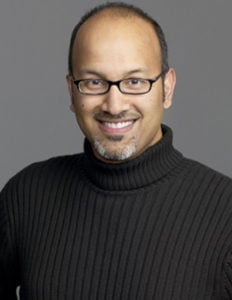
The Stanford Daily sat down with Shashank V. Joshi, associate professor of psychiatry, to discuss his work as a psychiatrist, professor and advocate for student mental health. As a panel member of the California State Superintendent’s Student Mental Health Policy Work Group, Joshi provided input on “AB-2246 Pupil suicide prevention policies,” a bill signed by Governor Jerry Brown on Sept. 26, 2016. In accordance with the new legislation, California school districts are now required to enact specific policy regarding suicide prevention for seventh- through 12th-grade students.
The Stanford Daily (TSD): What was your role in helping “AB-2246 Pupil suicide prevention policies” pass in the California state legislature?
Shashank Joshi (SJ): The Student Mental Health Policy Work Group makes recommendations to Tom Torlakson, the California State Superintendent of Public Instruction, in order to enact either legislation or school policy specifically to promote school mental health so that all students can be healthy enough to learn, because mental health is part of overall health.
The work group helped to create some momentum around getting legislation passed so that all schools would have access to the kind of best practice that has been developed throughout the country about mental health awareness, mental health promotion, wellness promotion and specifically suicide prevention.
One of the main reasons that people don’t get the help they need is because they aren’t informed about what suicide is, or about what the precursors are that might lead someone to desperation [and] to consider taking their [own] life. The link between mental illness and suicide happens 80 to 90 percent of the time when someone dies by suicide ― they have had a mental illness diagnosed at some point of their life, and are usually struggling with symptoms at the time of their death.
We were part of a large collective that gave input into what legislation might look like, and there were certain sections of the bill that members of the work group drafted specific language for.
TSD: Did anything else drive the proposal of this bill?
SJ: California has had a number of suicide clusters around the state since 2009. It also takes a kind of leader at the state level to take an interest in issues like these in order to highlight its importance. I’m sure this would not have been possible if Tom Torlakson didn’t spend a lot of time and energy on highlighting the importance of mental health in schools and devoting time and resources to bring together policymakers, clinicians and educators to develop best practice recommendations for suicide prevention in schools.
TSD: Did you encounter any obstacles while trying to get this legislation passed?
SJ: I would say people in general support the idea that schools ought to be a place where children are mentally healthy, but to go from that to enacting a policy that requires school districts to teach their staff and students about suicide prevention, mental health and wellness is quite another challenge. Because any time you require something to be done, it takes away from something else.
Some of the challenge around getting a law passed is that it has to be worded in a way that allows local districts to be creative and not feel like this is just one more requirement that they are forced to do. You want them to really buy in [and] you want them to feel like … they are given some encouragement and freedom to develop policies that will be specifically useful and practical for their own districts.
If you have a community that has experienced a suicide cluster, there’s more of a sense of urgency. If you have a community that has not, one of the challenges you face is the sense that, “Well, we’ve not had suicides recently, so why do we need to have a bill that requires us to do this? In fact, we believe that if we talk about suicide, we might make it worse.”
Well, the science says that when you do research on suicide or discuss suicide or enact suicide prevention policies, you bring the suicide numbers down. You don’t introduce the idea.
Suicide is something that affects our country. Depression affects 20 to 25 percent of American youth before they graduate from high school ― so it’s actually very common ― and the depression rates and the suicide attempts are going up. There has been a trend over the last 10 years of increasing numbers. So that makes it even more important to be talking not only about suicide prevention but also about the conditions that might lead someone to become suicidal, such as depression, anxiety, substance abuse and how to handle everyday stressors including more serious issues as well.
TSD: Do you have any advice for students regarding mental health?
SJ: Yes, get yours. Everybody needs mental health. Do things that make you happy and fulfilled. I guess I don’t have any advice that is simple and trite, but I would say to try not to wait until after you finish college to participate in activities that make you feel happy [and] also give you meaning and keep you engaged because you ought to be developing these life-balance priorities now as a student.
This transcript has been lightly edited and condensed.
Contact Lark Wang at larkw ‘at’ stanford.edu.
